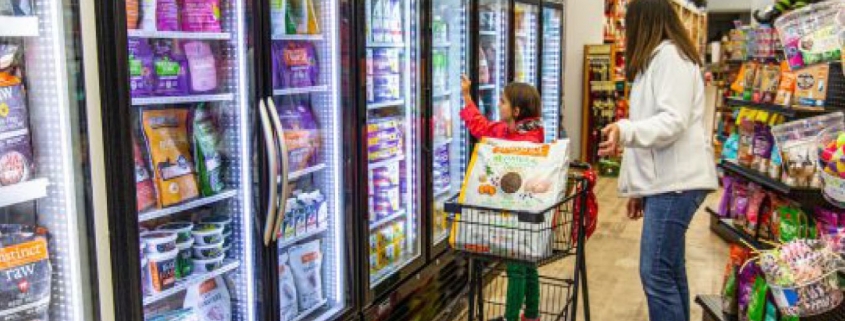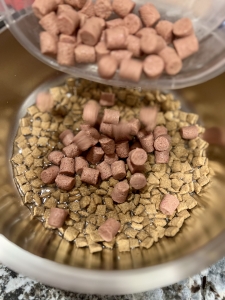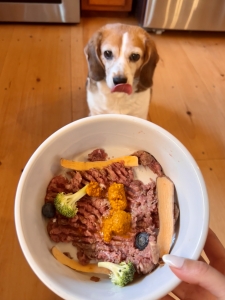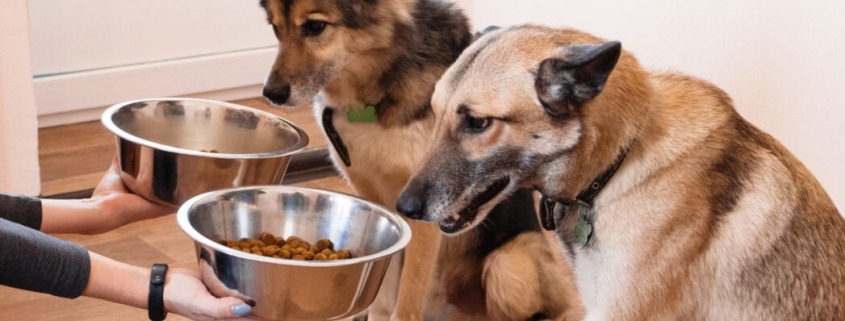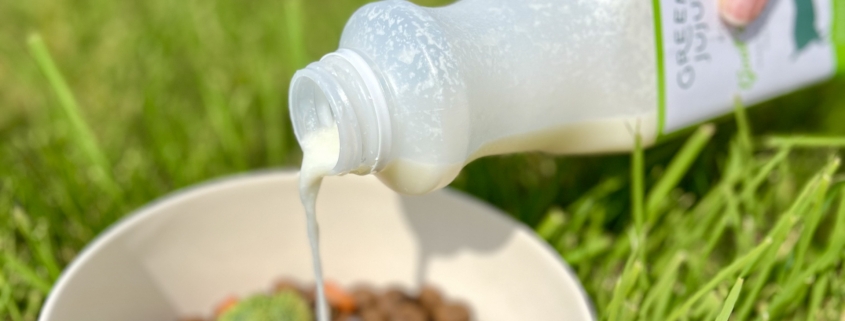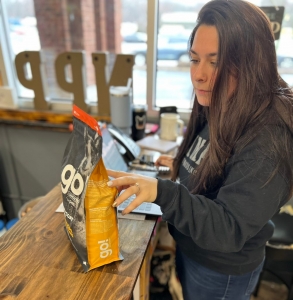How to Save Money on Your Pet’s Diet During Tough Times
As the pandemic continues, many pet owners are facing financial difficulties, causing them to rethink their pet’s diet. Raw and canned pet food feeding households are switching to kibble or supplementing with it to save money. In this article, we’ll explore some factors to consider when making the switch.
Calculating Carbohydrate Content
When looking for a lower cost alternative to raw or canned pet food, consider a lower carbohydrate kibble. To determine the percentage of carbohydrates, add together the percentages of protein, fat, moisture, fiber, and ash. Since ash is often not listed on the label, estimate it to be around 6-8%. Subtract the total from 100 to get the carbohydrate content.
Protein Quality
A low carbohydrate kibble does not automatically guarantee adequate or high-quality protein. Your dog or cat needs to consume a certain amount of total grams of protein rather than an overall percentage. If you’re transitioning from raw to kibble or supplementing your pet’s raw diet with kibble, it’s crucial to reach out to pet food companies and request:
- Third-party digestibility data for the specific formula you are considering feeding. Do they conduct digestibility testing for all of their formulas? Just one? Or none? This is important because if the food is not highly digestible, then the amount of protein is irrelevant since the animal may not be able to utilize it.
- A typical AAFCO nutrient analysis to determine if they regularly analyze their formulas for adequate nutrition that meets or exceeds AAFCO standards. Over time companies average these analyses together (typical) in order to provide a profile of that food over time. Most companies don’t conduct these tests and will instead provide a “targeted analysis” which represents the nutrition of that food as formulated on paper. It may not actually represent what is in the final product – AND if the company does not provide digestibility data it may mean that those nutrients may not be absorbed or metabolized adequately.
- Pay attention to the calorie ratios of the food you are considering. Specifically, look at protein to calorie, carbohydrate to calorie, and fat to calorie ratios. This information will help you determine if the food is suitable for your pet’s specific needs. It may also indicate the accuracy of claims made on the packaging.
Adding Fresh Food
Adding fresh fruits and vegetables to your pet’s bowl can provide numerous health benefits, whether you feed kibble or raw. Using foods that may otherwise go to waste can also help reduce costs. Fresh fruits and vegetables contain antioxidants that neutralize toxic free radicals, reducing oxidative stress and DNA damage.
A lot of us raw feeders choose to feed raw due to health conditions, disease prevention, and/or personal choice. While much of the evidence supporting these diets is anecdotal, there is a lot of research emerging to support these diets. Regardless, we do know there is sufficient published evidence to show the detriments of processed kibble and canned foods. For this reason, many of us worry about transitioning back. The good news is the researchers at the University of Helsinki DogRisk group have shown that feeding just 20% fresh food with processed food (i.e. kibble and canned food) reduces the incidence of inflammatory biomarkers quite significantly.
Consider Freeze-Dried Foods
If you’re feeding commercial raw, consider freeze-dried foods. Traditionally, these foods have been cost-prohibitive, but there are now highly digestible and affordable brands, such as Northwest Naturals and Vital Essentials. These foods are shelf-stable, lightweight, and easy to store or transport.
Conclusion
Switching to a lower cost alternative to raw or canned pet food can be stressful, but it doesn’t have to be. By considering the factors discussed in this article, you can make a more informed decision about what to feed your pet during these tough times. Remember, adding fresh foods and considering freeze-dried options can help you save money while still providing your pet with a healthy diet.
*This article is for informational purposes only. It is not meant to provide medical advice or replace the advice of a qualified veterinarian.
About the Author: Nicole Cammack
Nicci is the owner of award-winning NorthPoint Pets & Company, in Connecticut. She is also the Founder & CEO of Undogmatic Inc. Her undergraduate and graduate education includes biology, chemistry, business, and nutrition. She has worked in the pharmaceutical industry on multiple R&D projects and has had the privilege to learn from leading international figures in the human and pet health industry. She regularly lectures at national conferences, including federal, state, and municipal K9 events. Her current research involves identifying pathogenic risk factors and transmission among raw fed pets through a comprehensive worldwide survey.

